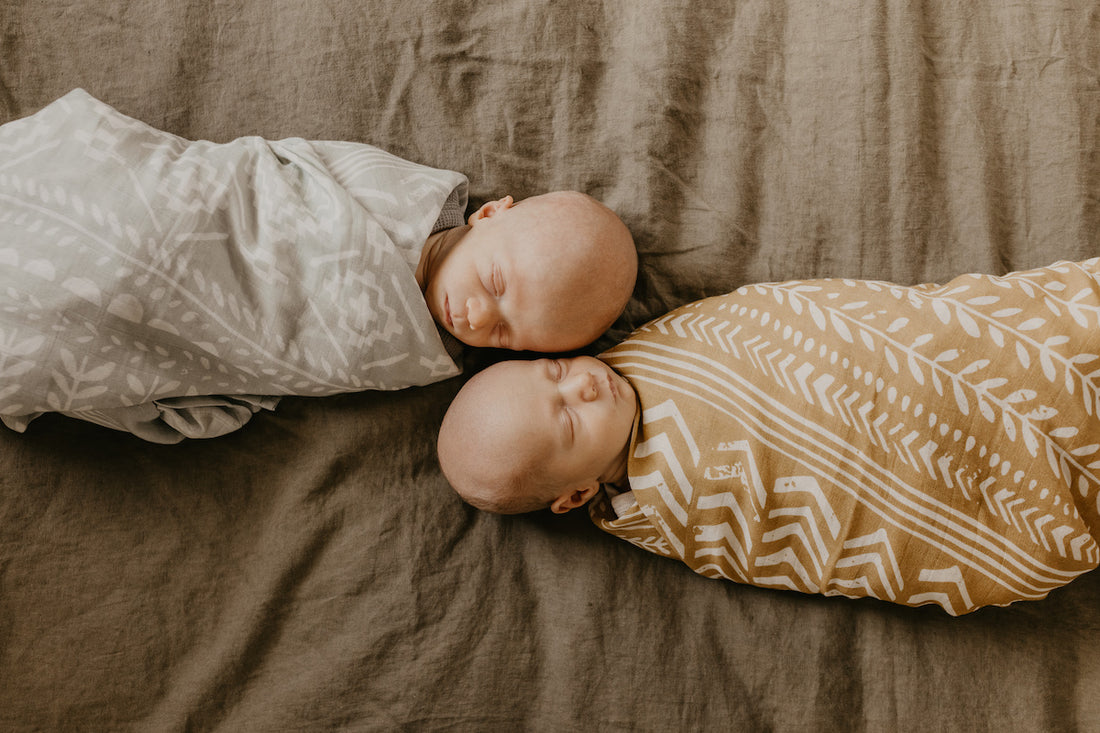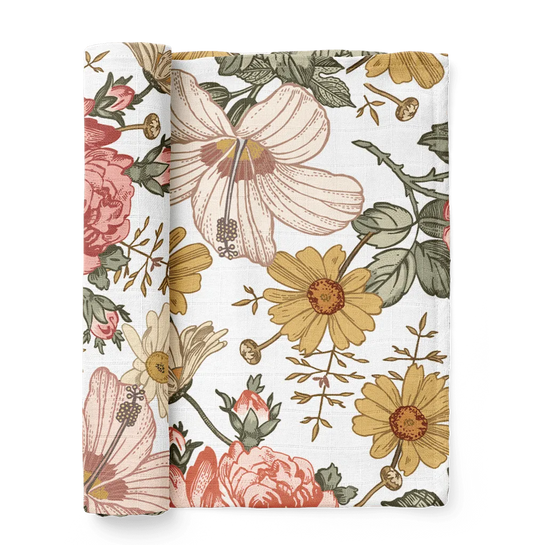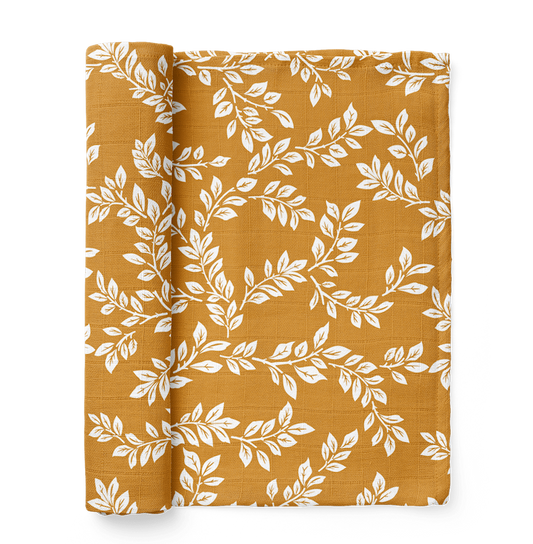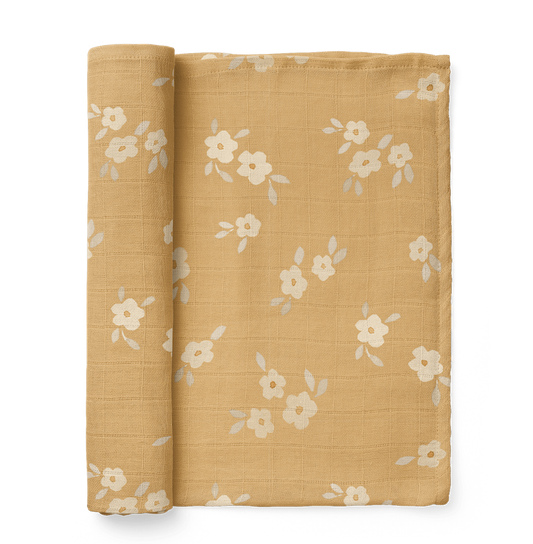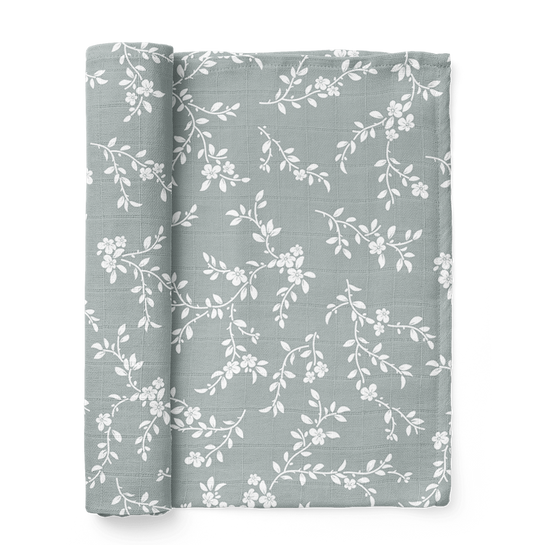Ensuring your baby's comfort and safety during sleep is important for their well-being. One critical aspect of this is maintaining an ideal temperature as they sleep. Babies are more susceptible to overheating, which can pose risks to their health. In this blog post, we'll explore the signs that indicate your baby might be too hot while sleeping and offer tips to ensure a comfortable and safe sleep environment.
Importance of Proper Temperature Regulation for Babies:
Babies have developing thermoregulation systems, making them more vulnerable to extreme temperatures, especially during sleep. Overheating in infants can lead to dehydration, heat exhaustion,sudden infant death syndrome, and even heat stroke, posing serious health risks.
An overheated baby may not be able to regulate their body temperature effectively, putting them at risk of heat-related illnesses. Dehydration can occur as a result of excessive sweating, leading to imbalances in electrolytes and fluids. Heat exhaustion can cause symptoms such as fatigue, weakness, dizziness, and nausea. In severe cases, heatstroke can occur, which is a life-threatening condition characterized by a body temperature of 104°F (40°C) or higher, along with symptoms such as confusion, rapid heartbeat, and loss of consciousness.
Furthermore, overheating has been associated with an increased risk of SIDS, a sudden and unexplained death of an otherwise healthy infant, typically occurring during sleep. Although the exact cause of SIDS is unknown, overheating may contribute to an infant's vulnerability by affecting their ability to regulate their body temperature and increasing their risk of respiratory and cardiovascular disturbances.
It's crucial for parents and caregivers to be aware of the signs of overheating in babies and take steps to prevent it. By maintaining a comfortable sleep environment, dressing babies appropriately for the temperature, and monitoring your sleeping baby closely, you can help reduce the risk of overheating and promote safe and restful sleep for your little one.
Signs That Your Baby Might Be Too Hot While Sleeping:
Babies can become overheated for various reasons, whether it's being outside in hot weather, an excessively warm indoor environment, or being overdressed even in cold weather. Inadequate ventilation, too many layers of clothing made from materials that trap heat, or using heaters excessively can also contribute to a baby overheating. Being aware of these potential triggers is crucial for maintaining a comfortable sleep environment for your little one.
Flush or Red Skin: Excessive warmth can cause your baby's skin to appear flushed or red, especially on their face and chest. Check for areas of increased redness, particularly on the cheeks, forehead, or neck.
Sweating or Damp Hair: If your baby is overheating, they may sweat excessively, have damp hair from perspiration and wet clothes. Feel your baby's skin and check their hair for moisture, especially around the neck, back, and head.
Rapid Breathing or Panting: Overheated babies may breathe rapidly or pant as their bodies try to cool down. Observe your baby's breathing pattern, noting any sudden or exaggerated breaths, which may indicate overheating.
Restlessness or Fussiness: If your baby is uncomfortable due to heat, they may become restless or fussy during sleep, often waking frequently. Pay attention to signs of discomfort, such as increased movement, grunting, or whimpering.
Difficulty Settling Down: Babies who are too hot may struggle to settle down to sleep, tossing and turning instead of resting peacefully. Notice if your baby seems agitated or unable to find a comfortable sleeping position despite your efforts to soothe them.
Feeling Hot to the Touch: A simple touch can often reveal if your baby feels unusually hot, indicating possible overheating. Gently place your hand on your baby's forehead, chest, or back to assess their body temperature. If babys skin feels excessively warm or hot to the touch, it may signal that they are overheated.
Heat Rash: Heat rash, also known as prickly heat, can occur when sweat ducts become blocked, leading to small red bumps or blisters on the skin. Check for any signs of rash, particularly in areas where sweat may be trapped, such as the neck, chest, back, or diaper area.
By recognizing these signs, you can promptly take action to address your baby's comfort and prevent overheating during sleep. It's essential to remain vigilant and responsive to your baby's cues to ensure they sleep safely and comfortably.
Tips for Keeping Your Baby Comfortable While Sleeping:
Ensuring your baby's comfort during sleep is essential for their well-being. One critical aspect of this is maintaining an appropriate sleeping temperature and choosing the right clothing, bedding, and sleep accessories.
Dress Appropriately: Dressing your baby in the right clothing is crucial for regulating their body temperature. Opt for lightweight, breathable fabrics like cotton, bamboo, or linen, which allow for airflow and moisture evaporation. Choose loose-fitting garments that can be layered for warmth in cooler temperatures or adjusted for comfort in warmer weather. Avoid clothing that is too tight or restrictive, as it can hinder airflow and contribute to overheating.
Consider their age and individual needs. Newborns may require more layers to stay warm due to their lower body fat and developing thermoregulation systems. As your baby grows, you may find that they require fewer layers to maintain a comfortable temperature and that what they needed as a newborn is no longer necessary as they gain body fat.
Choose the Right Bedding: Selecting suitable bedding is equally important for creating a safe and comfortable sleep environment for your baby. Opt for lightweight, breathable materials such as cotton or linen for crib sheets, blankets, and mattress covers. Avoid heavy or bulky bedding that can trap heat and increase the risk of overheating. Ensure that bedding is free from excessive padding or layers, as these can restrict airflow and pose suffocation hazards.
Sleep Sacks and Swaddles: Sleep sacks and swaddles are excellent alternatives to blankets for keeping your baby cozy and safe during sleep. Choose baby products made from lightweight, breathable fabrics that provide warmth without overheating. Look for sleeveless options for warmer weather and quilted wool styles for cooler nights. When swaddling your baby, use stretchy, breathable fabrics like muslin that allow for natural movement and airflow. Ensure that the swaddle is snug but not too tight, allowing room for your baby to breathe comfortably.
Adjust Room Temperature: Maintaining a comfortable room temperature is crucial for promoting restful sleep and preventing overheating. Aim for a temperature between 68-72°F (20-22°C) in your baby's sleeping area. Use a room thermometer to monitor the temperature regularly and make adjustments as needed. During warmer months, consider using a fan or air conditioning to help cool the room and create a comfortable sleeping environment for your baby.
Monitor Comfort Levels: Regularly check your baby's temperature and observe their comfort levels during sleep. Feel their skin to ensure they are not too hot or too cold. If your baby feels warm to the touch or shows signs of discomfort, such as sweating or restlessness, adjust their clothing or bedding accordingly. Dress your baby in layers that can be easily added or removed to maintain a comfortable body temperature throughout the night.
Ensure proper ventilation in the babys room to prevent overheating and promote a healthy sleep environment for your baby.
Monitor the use of space heaters: If you're using a space heater to warm the room, be cautious as they can potentially overheat a small space. Keep the door open to allow for proper airflow and prevent the room from becoming too hot.
Consider using a humidifier: Maintaining an optimal level of humidity in the air can also contribute to your baby's comfort during sleep. A humidity level between 40-60% is generally recommended for optimal respiratory health and comfort. A humidifier can help add moisture to the air, especially in dry climates or during the winter months when indoor heating can dry out the air.
By following these guidelines and selecting the right clothing, bedding, and sleep accessories for your baby, you can help create a safe and comfortable sleep environment that promotes optimal temperature regulation and ensures restful sleep.
What to Do If You Suspect Your Baby is Too Hot While Sleeping:
Check Temperature: Take your baby's temperature using a thermometer to gauge their body temperature accurately.
Adjust Clothing or Bedding: If you notice that your baby is too hot, consider removing a layer of clothing or switching to lighter bedding to help them cool down. Our woven cotton crib sheets are 100% cotton. They are cool, crisp and perfect for warmer weather. This simple adjustment can make a significant difference in their comfort level.
Provide a Cooler Environment: Create a cooler sleeping environment by adjusting the room temperature or using fans. Ensure that the baby is not placed near a heater or any source of blowing hot air, and avoid direct sunlight or sunbeams falling on them.
Monitor Closely: Keep a close eye on your baby's comfort and behavior, making adjustments as necessary. If you observe signs of discomfort or overheating, such as sweating, restlessness, or flushed skin, take immediate action to cool them down.
Seek Professional Advice: If you're concerned about your baby's temperature regulation or health, consult a healthcare professional for guidance. They can provide personalized advice and recommendations based on your baby's specific needs and circumstances. Additionally, if your baby has a fever or other more subtle signs of illness such as a red nose along with temperature regulation issues, it's essential to seek medical attention promptly. A healthcare provider can assess your baby's condition, provide appropriate treatment, and offer reassurance and support to ensure their well-being.
Conclusion
Maintaining a comfortable sleeping environment is crucial for your baby's health and well-being. By recognizing the signs of overheating and implementing appropriate measures, you can ensure your baby sleeps safely and soundly. It's important to monitor your baby's temperature regularly, especially since they may not awaken if overheating occurs during deep sleep. Additionally, consider using baby products such as monitors equipped to alert you if the temperature becomes too high, providing you with peace of mind and ensuring your baby's safety throughout the night. Remember, always seek medical advice if you have concerns about your baby's health or comfort.

